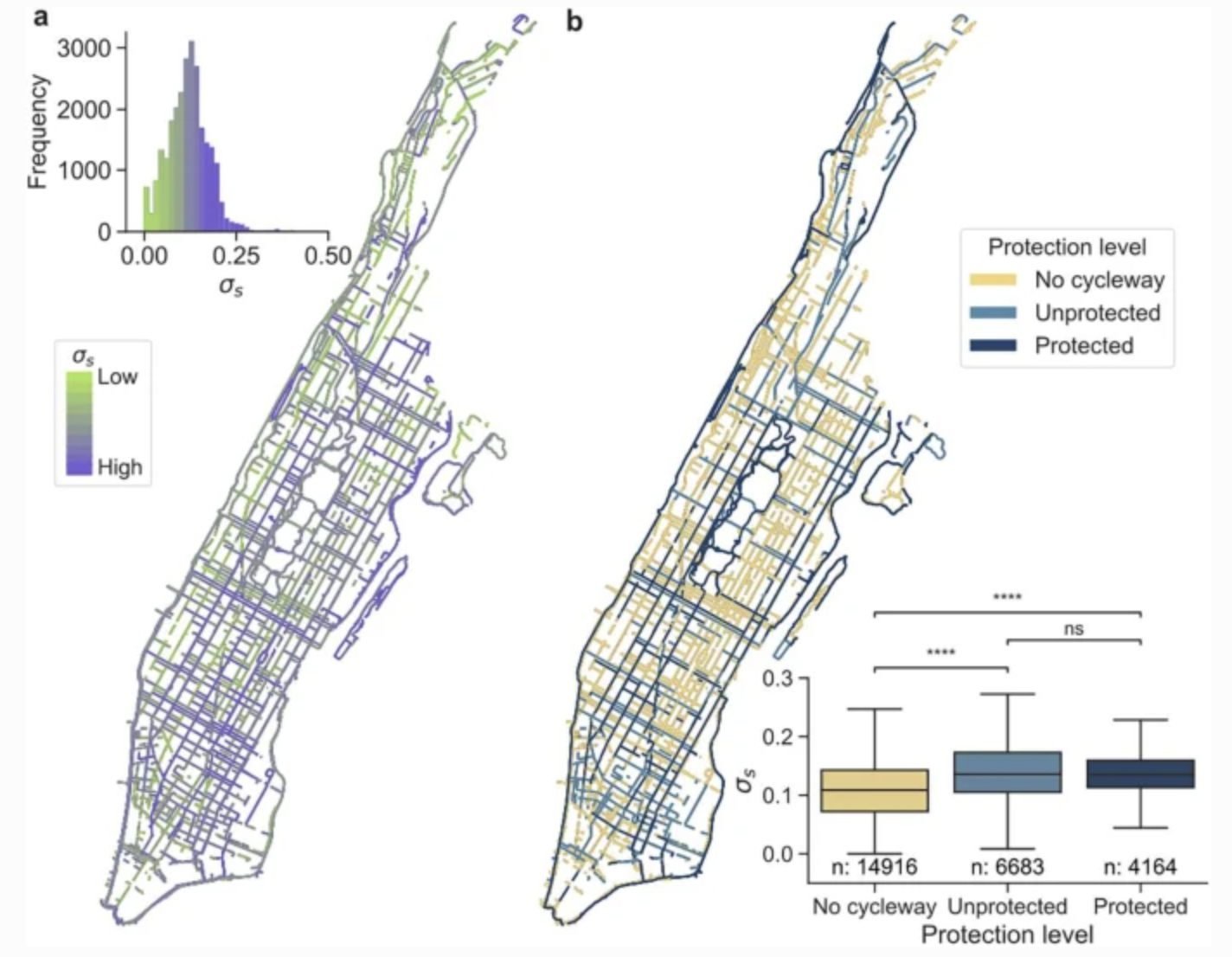Revealing the determinants of gender inequality in urban cycling with large-scale data, by A. Battiston, L. Napoli, P. Bajardi, A. Panisson, A. Perotti, M. Szell & R. Schifanella, published in EPJ Data Science
The uptake of cycling in today’s cities is especially low for women: there is a largely unexplained, persistent gender gap in cycling. To understand the determinants of this gender gap in cycling at scale, here we use massive, automatically-collected data from the tracking application Strava on outdoor cycling for 61 cities across the United States, the United Kingdom, Italy and the Benelux area. While Strava data is particularly well-suited to describe the behavior of regular cyclists and its generalizability to occasional cyclists requires further investigation, the size of these data and their characteristics represent an unprecedented opportunity for the literature on cycling. Leveraging the associated gender and usage information, we first quantify the emerging gender gap in recreational cycling at city-level. A comparison of cycling rates of women across cities within similar geographical areas—where the penetration of Strava is assumed to be comparable—unveils a broad range of gender gaps. On a macroscopic level, we link this heterogeneity to a variety of urban indicators and provide evidence for traditional hypotheses on the determinants of the gender-cycling-gap. We find a positive association between female cycling rate and urban road safety. On a microscopic level, we identify female preferences for street-specific features in the city of New York. Assuming that the determinants of the gender-cycling-gap are similar across regular and occasional cyclists, our study suggests that enhancing the quality of the dedicated cycling infrastructure may be a way to make urban environments more accessible for women, thereby making urban transport more sustainable for everyone.

